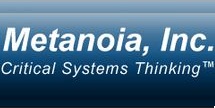Carrier Ethernet: Architectures and Design Best-Practices
"Carrier Ethernet" has been a much-bandied term in the past couple years, with heated debates (refer the signature debate at the MPLS World Congress in 2007, 2008, and 2009) on whether it supercedes or complements IP/MPLS technology. There are many nuances to this debate. First, "Carrier Ethernet" is a service, and can be realized using IP/MPLS technology. But, even if one restricts it to mean, carrier-class Ethernet (or Ethernet enhanced with carrier-class features of manageability, quality-of-service, survivability, and so on), the debate is not so simple -- the end-goal of a carrier (and, by extension, of a vendor) is to offer the best, most competitive services to its customers. So, the focus should really be on how to build a service that best satisfies customer needs.
Indeed, it turns out that there are seven distinct types of architectures an operator could choose from when planning a metro Ethernet deployment. Our goal in this webinar series will be to walk in-detail through each architectural option, explaining its design principles, how it works, and the tradeoffs involved in choosing that architecture. We will then outline canonical best-practices that we have found operators using today, through our analysis, research, and interactions with operators in North America, Europe and Asia. Finally, we will provide insights into where each of the technologies that play a role in building a "Carrier Ethernet" network (e.g. IP/MPLS, MPLS-TP/T-MPLS, PB/PBB/PBB-TE, PVT or combinations thereof) is headed from an evolution and standards perspective.
Definitely a seminar/workshop series that will provide deep critical insights, clear-up much confusion on the issue, shed light on key technical factors, and highlight practical issues that dictate operator choices. A must attend for those interested in understanding the network architectural implications of these technologies, and gaining a perception on emerging operator best-practices, and the motivations behind them.
To receive more information on this webinar series, please sign-up below.
IP Quality-of-Service: Techniques and What Operators/Vendors Need to Know
It would seem that after almost 20 years of work on Quality-of-Service, and at least a decade plus devoted to IP QoS in particular, this would be a well-understood subject, with very little left to discus. In fact ... nothing could be further from the truth!
As applications and services become diverse and increase in volume, and operators focus on network convergence, the need to intelligently provide different treatment to different traffic, while at the same time maximizing infrastructure utility by effectively using it has never been stronger. The QoS toolset available to do so (toghether with network planning and design) is an effective means to accomplish said goals. Yet, doing so is easier said than done! With a plethora of techniques and building blocks, and an alphabet soup of acronyms (RED, RIO, WRED, GPS, WFQ, WRR, WDRR, DRR, MDRR, CBQ, LLQ, SP, sr-TCM, tr-TCM, TBM, LBM, to name just a few!), plus the din of vendor announcements/pronouncements and claims, it has become extremely difficult for an operator to distill the essence of each QoS building block, and develop designs that can utilize the power of the techniques available. Indeed, even vendor personnel may have a hard time developing a birds eye-view of the techniques and how to compose them, and in separating reality from kool-aid. To do so, and truly utilize QoS requires a comprehensive understanding of key underlying principles governing each traffic management operation, appreciating it's placement in a switch/router and/or network, and having the insight to implementing the right QoS strategy in each segment of the network.
This seminar/workshop series will look at this issue in depth -- starting with a comprehensive examination of key techniques for QoS in packet-based networks (e.g. IP and Ethernet), their operation, purpose, and value. It will then look at Layer 3 and Layer 2 QoS strategies, and at the usage of these techniques in the access, metro, and core segments of service provider networks. Finally, we will look at some canonical service provider architectures for access, metro, and core segments, and disucss the application of QoS techniques in them by way of illustration.
The goal will be to give insights into which procedures are applicable to which network segment, why, and how, and to empower both service providers and vendors. Service providers by helping them to ask the right questions and better design their networks, and vendors by helping them to better design systems and/or more effectively articulate the value provided by their switches/routers. Definitely a seminar series worth attending if you deal with QoS on a regular basis (either in a vendor or a service-provider environment), wish to really nail the fundamentals, and undesrtand their application at the network level.
To receive more information on this webinar series, please sign-up below.
WiMAX QoS Architectures: What You Should Know About QoS in WiMAX Networks
WiMAX has been the subject of much speculation and euhporia, as a panacea for broadband access in a large part of the world that is without an adequate wired infrastructure. It is almost 3x cheaper to deploy a wireless base-station than it is to build a wired infrastructure to serve the same market, so the appeal of wireless in much of the developing world is natural (witness the blazing rate of mobile subscriber growth in both India and China in 2007-08, which together now boast a billion plus mobile subscribers today!). WiMAX tests and deployments have occured in Latin America, Eastern Europe, Russia, Middle East, Africa, India, Malaysia, Australia, and Korea, and in many parts of the world it continues to be a technology looked upon as a key part of a broadband wireless acess strategy.
WiMAX is, at its heart, one of the first truly packet-oriented wireless technologies, designed to carry diverse types of traffic efficiently, while ensuring that each traffic type can obtain its desired service quality in as efficient a manner as possible. However, achieving this is much more than just "following" the standards. This is because some of the key aspects of quality-of-service (e.g. scheduler design, scheduling algorithms, and their inter-relationships with the PHY layer) are left open in the standards, allowing for vendor and carrier differentiation. The vendor's challenge therefore is to decide what QoS aspects to build into their chips/systems, while the operator's challenge is to devise ways of using that capability most effectively.
Both of these require a through understanding of how QoS works in WiMAX (or, more generally, in broadband wireless access) networks. This includes appreciating some of the vagaries that come about due to the wireless nature of the link, which makes QoS that much more complex. What parameters to tune for example? What scheduler choices are optimal? How do they interact with the adaptive PHY layer, which is the bedrock of WiMAX systems? What settings are optimal from a throughput and revenue perspective? These are questions that are not easily answered without the right insights.
The goal of this webinar series will be to pull the covers off this less-discussed aspect of QoS. Not only will we discuss key aspects of QoS built into the standards, but we will also explain the "why" behind them, and the "how" of using them. We will focus on aspects that are not specified in the standards, and utilize our industry-knowledge and our own research to give the audience a good understanding of the issues in deploying QoS-capable WiMAX networks.
To receive more information on this webinar series, please sign-up below.
Please sign-up here to receive announcements for the dates, times, and schedules of the above webinar sets, and to receive detailed outlines of what each series will encompass.
 Our Blog
Our Blog Announcement
Announcement Email Signature
Email Signature  Big Data Clouds
Big Data Clouds Secure Green Clouds
Secure Green Clouds  Cloudy Enterprise
Cloudy Enterprise 